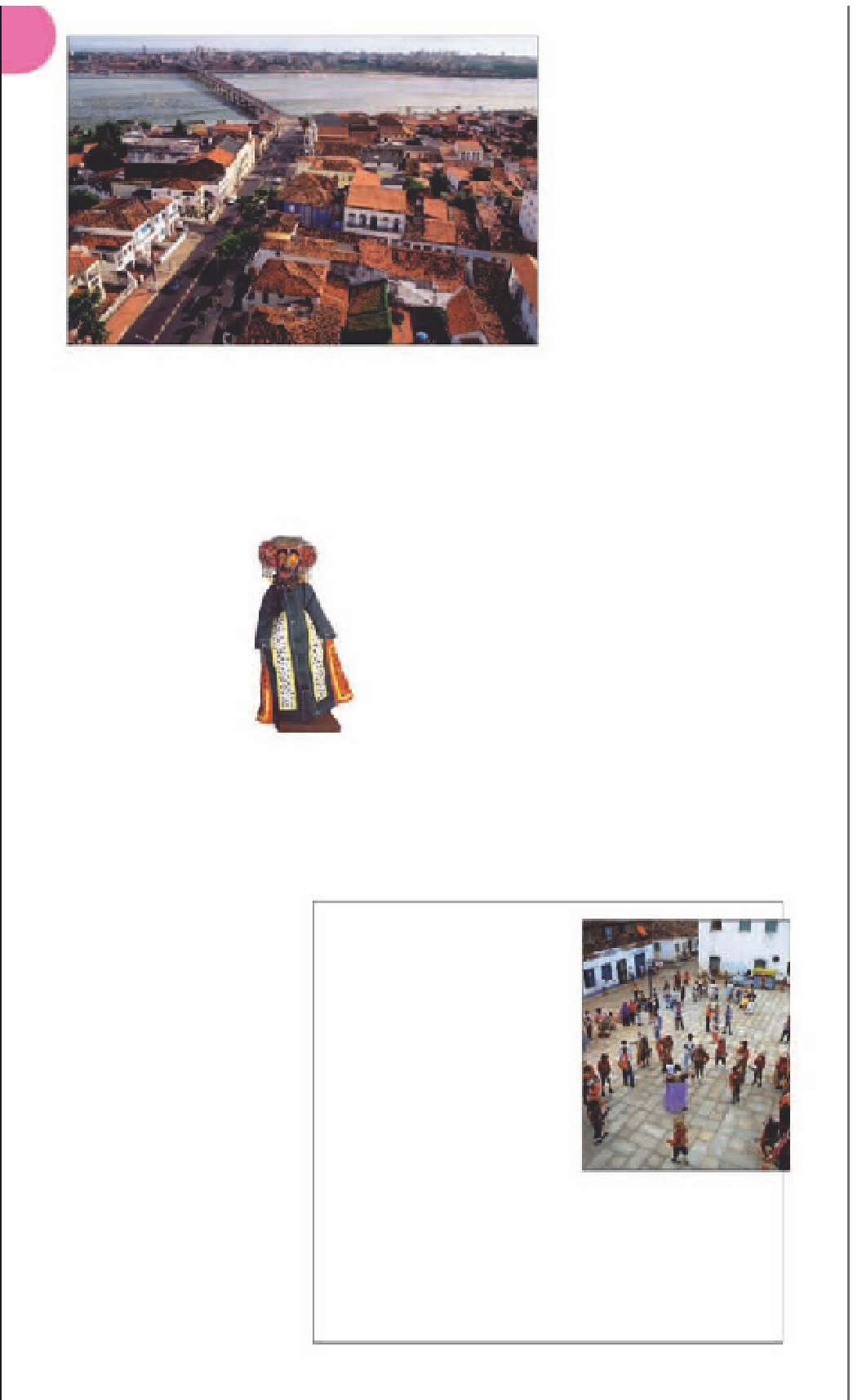Travel Reference
In-Depth Information
São Marcos, Praia do Calhau,
Calhau
, and Olho d'Agua.
Calhau, located 6 miles
(10 km) from São Luís, is
considered by many to be
one of the nicest beaches
around the city. Many busy
kiosks and restaurants line
the beachside boulevard.
The quiet far end of the
beach, where the water is
calm and restaurants fewer,
is known as Caolho.
E
Cafua das Mercês
Jacinto Maia 43.
#
9am-6pm
Mon-Fri.
E
Casa do Maranhão
Rua do Trapiche s/n.
Tel
(098) 3218
9955.
#
1-7pm Mon-Fri,
9am-6pm Sat & Sun.
8
E
Centro de Cultura Popular
Rua do Giz 221.
Tel
(098) 3318
9924.
#
9am-7pm Tue-Sun.
8
José Sarney Bridge connecting the historic district to São Francisco, São Luís
Exploring São Luís
The
José Sarney
Bridge leads
from the Centro Histórico
into the newer parts of the
city. Across the bridge lies
São Francisco, the city's small
central business district. Just
beyond São Francisco, there
is a large freshwater lake,
the Lagoa de Jansen,
circled by a boardwalk
with a number of bars
and restaurants. Much
calmer than the Centro
Histórico, it is a very
popular place to stroll
in the evenings. São
Luís is blessed with a
string of excellent
beaches, all of
which can be easily
accessed by bus from
the Terminal de Integração
in the city center.
Farther south, beyond the
Lagoa de Jansen, the popular
beaches are Ponta d'Areia,
The rich and diverse historical
center of São Luís makes it
ideal for touring on foot. This
is the oldest part of the city,
known interchangeably as the
Praia Grande, the Reviver,
and the
Centro Histórico
.
All the city's museums
and beautifully preser-
ved historic sites are
located here.
The
Casa do
Maranhão
is one of the
city's most interesting
museums, offering two
floors of colorful
exhibits that elaborately
explain the Festa do
Bumba-meu-boi.
The
Centro de
Cultura Popular
(also known
as the Casa da Festa) is
dedicated to showcasing
the traditions and customs
of the Festa do Divino
Espírito Santo. The highlights
of the museum are the
poster-size photographs of
the actual celebrations,
including some compelling
black-and-white images of
the elderly women who have
served as festival queens.
The building that once
housed the city slave market
is now home to the
Cafua das
Mercês
, also known as the
Museu do Negro. This small
museum contains numerous
artifacts from the slave era,
including musical instruments
and tribal artwork, and sinister
tools of the slave trade, such
as shackles and instruments
of torture. One of the more
poignant monuments is the
Pelourinho, or the whipping
post, on display in the
museum's central courtyard.
Alcântara
6
Maranhão.
*
6,000.
g
from São
Luís.
n
Casa Municipal de Turismo,
(098) 3231 4696.
_
Festa do Divino
Espírito Santo (May).
Just across from São Luís,
Alcântara lies on the other
side of the Baía de São
Marcos. The city was founded
by the Portuguese in the
1640s, and used as a tempo-
rary capital and base during
the campaign to drive the
Dutch away from São Luís.
Alcântara reached its zenith
in the 19th century as
Cazumba figure,
Casa do Maranhão
BUMBA-MEU-BOI
A unique folklore event endemic
to Northeast Brazil, the Festa do
Bumba-meu-boi revolves around
a legendry folktale about the
life, death, and resurrection of
a magical Brazilian bull. Over
the centuries, the celebration
has grown into a huge carnival-
esque festival, with different
neighborhood groups com-
peting to put on the best
re-enactment of the story. In
São Luís alone, more than 100
groups take to the streets. A
papier-mâché bull is created
each year and displayed in raucous parades, where partici-
pants take on the roles of medicine men, Indians, peasants,
and cowboys. The largest celebrations take place in the
second half of June. The music is upbeat and lively, with
different groups using different rhythms and instruments.
A colorful celebration of the
Bumba-meu-boi festival
For hotels and restaurants in this region see p381 and pp406-407




































